Can the U.S. Act On Climate Without the Federal Government?

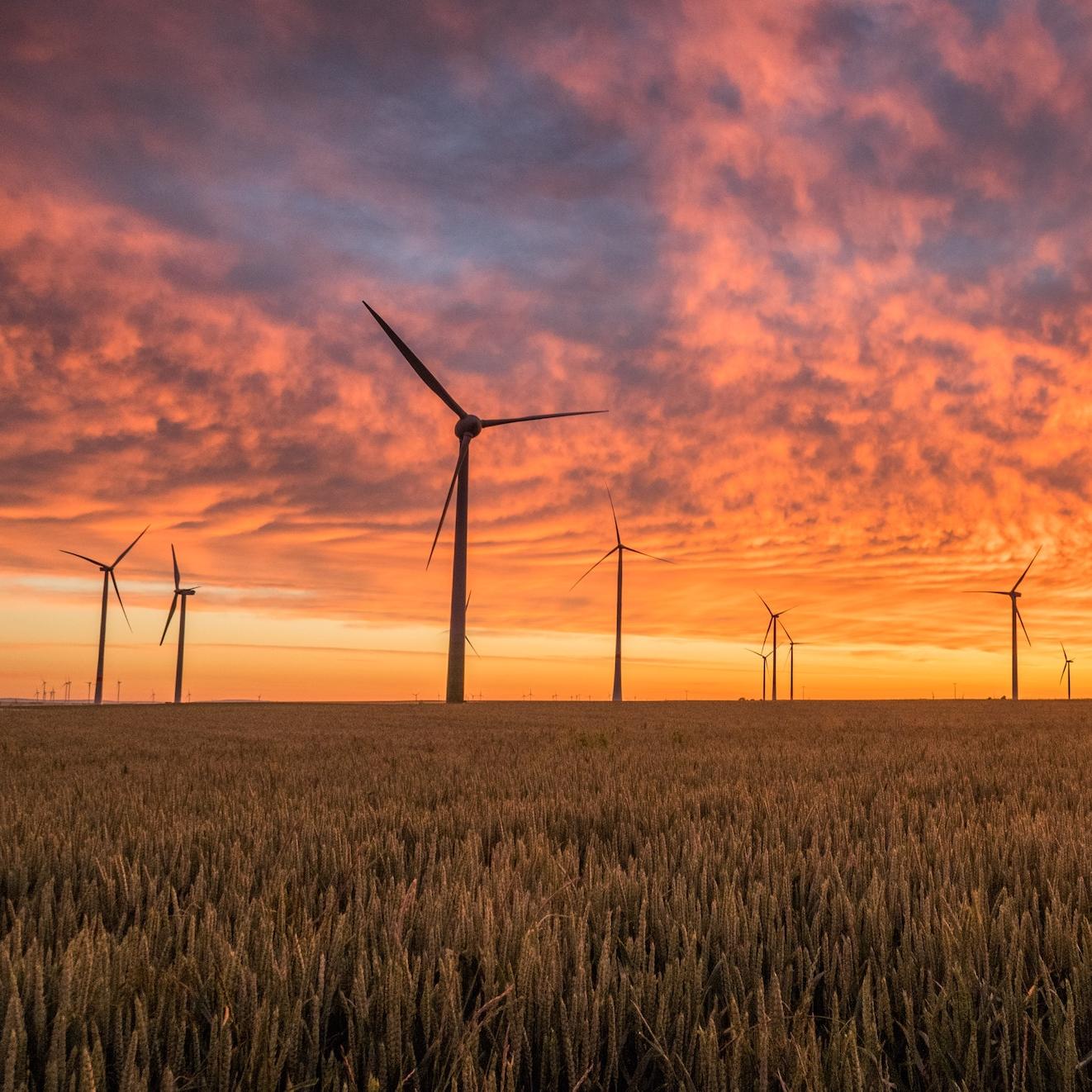
When President Donald Trump announced plans to pull the U.S. out of the Paris climate agreement in 2017, advocates feared the worst. But by then, the bottom-line benefits of decarbonization were already coming into focus. Scores of leading U.S. businesses were already firmly in the decarbonization corner, along with multiple cities, states, academic institutions and civic entities.
A new report from the U.S. climate action organization America’s Pledge shows how harnessing that collective willpower can accelerate decarbonization, even if the federal government maintains no formal commitment to the Paris Agreement.
Honoring the Paris Agreement on climate change (or not)
To start with the bad news first, the new report—entitled Accelerating America’s Pledge on Climate Change—makes it clear that the lack of a strong national climate policy will continue to have a significant, negative impact on the nation’s ability to accelerate decarbonization.
The report found that the election of “climate-forward candidates” from the president on down could result in an almost 50 percent reduction in greenhouse gas emissions over the next decade, compared to a 2005 baseline.
In contrast, a coalition-based or “bottom-up” approach without a fully engaged federal policy over the same time period would result in a 37 percent drop in GHGs. That's no small feat—in fact it aligns with the nation's Paris Agreement commitment of a 26 to 28 percent reduction by 2025. But on its own, it's not enough to limit global temperature rise to 1.5 degrees Celsius by the end of this century, as called for in the Agreement.
Climate leadership matters, at every level
Considering that 2020 is an election year, a pause for context is required. The America’s Pledge organization was co-launched in 2017 by former California Gov. Jerry Brown and former New York City Mayor Michael Bloomberg. The latter's nonprofit, Bloomberg Philanthropies, provided additional funding for the new report last spring.
In this context, some could say the report now functions as supporting material (and free publicity) for Bloomberg’s newly announced campaign for U.S. president.
Nonetheless, it provides corporate leaders with a powerful blueprint for accelerating action on climate change. Researchers from the University of Maryland, the Rocky Mountain Institute, the World Resources Institute and CDP analyzed the real-world decarbonization leadership of U.S. states, cities and businesses. Using this data, they calculated the impact of those commitments if incorporated into national policy.
In addition to halving greenhouse gas emissions over the next 10 years, adding local experience to national policy could build the platform for a net-zero carbon emissions economy in the U.S. as early as 2050, the researchers found.
And now, for the good (clean tech) news
If that sounds overly ambitious, perhaps so. However, the America’s Pledge organization tracks the progress of its existing roster of states, cities and businesses honoring the Paris Agreement, and it has found that decarbonization is occurring faster than anticipated.
However, it would be a mistake to attribute the momentum solely to political or collective willpower. An equally important factor consists of the technology and systems that enable rapid decarbonization.
Wind and solar power, electric vehicles, high-efficiency lighting, and other clean technologies were barely on the horizon 10 years ago, and now they are in or near the mainstream. With that in mind, the researchers emphasize “high-impact” decarbonization pathways that are already in hand.
Their 10-year strategy includes accelerating the transition to clean electricity and other clean fuels, decarbonizing the transportation and building sectors, and leveraging carbon storage in forests, farms and coastal wetlands.
Notably, the plan does not account for carbon capture at coal power plants, probably because there will be none. The 2030 scenario envisions no coal power, 60 percent renewable electricity or more, all-electric construction for new buildings, and electric vehicles accounting for two-thirds of all new car sales.
There does not appear to be much room for new natural gas in electricity generation, either: “New analysis also indicates that clean energy portfolios of wind, solar and storage coupled with demand-side management cost less than 90 percent of the proposed gas-fired power plants across the country,” reads page 22 of the report. “These plants, if built, would put customers, shareholders and society at risk for stranded costs.”
U.S. businesses are already voting for decarbonizaton with their checkbooks by aggressively pursuing new opportunities to acquire renewable energy and upgrade to more efficient systems. Combining that bottom-line motivation with political willpower is the next logical step for accelerating action on climate change, regardless of who occupies the Oval Office next.
Image credits: Karsten Würth/Unsplash
Water Efficiency Is Key To Climate Action, Says Ecolab
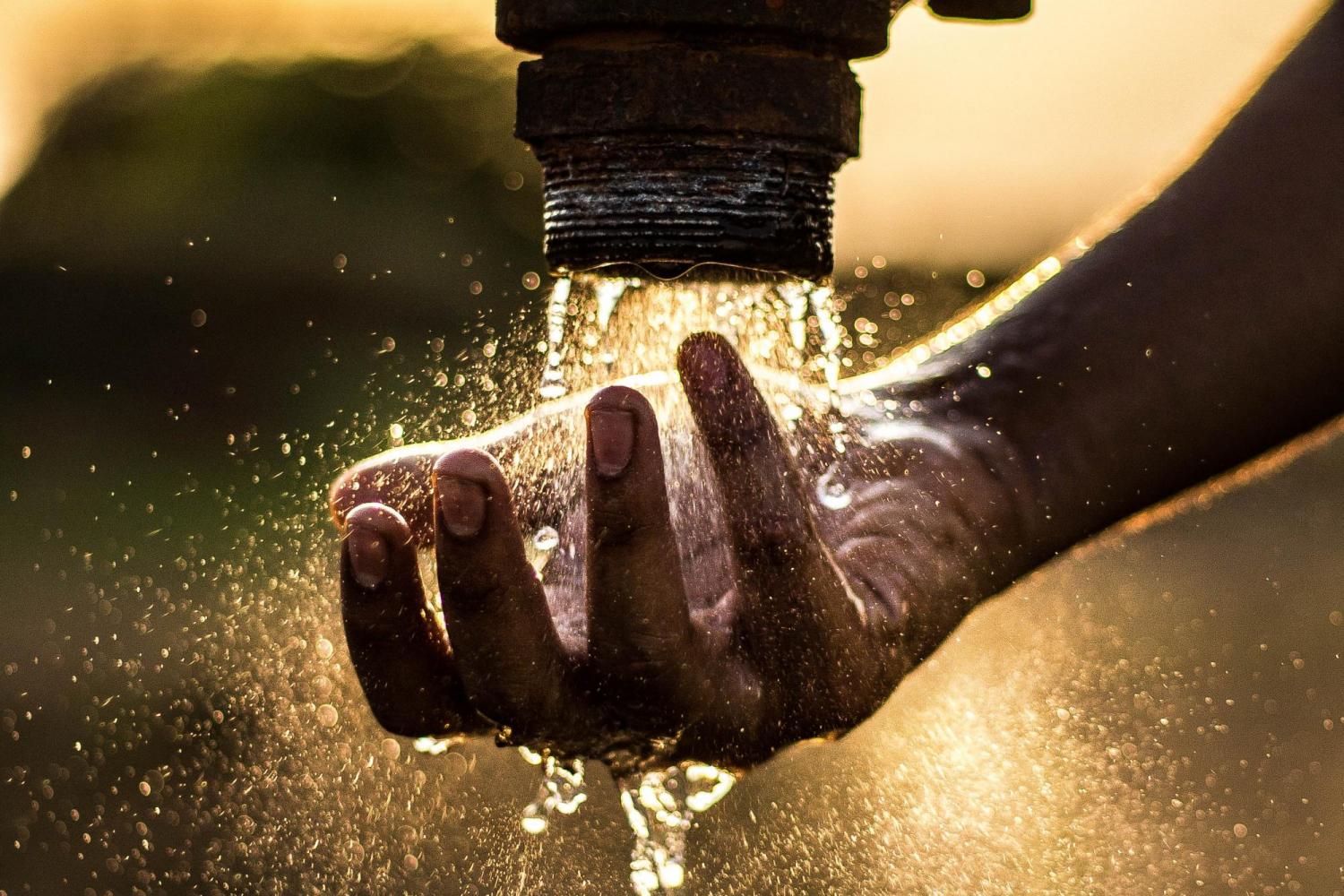

Many companies looking to meet the goals of the 2015 Paris Agreement on climate change are in a bind. They want to transition to net-zero carbon emissions, but it's often unclear how to reach that goal.
The water, energy and hygiene solutions firm Ecolab is the latest to commit to a net-zero trajectory—pledging to halve emissions by 2030 and zero them out by mid-century, while signing on to the U.N. Global Compact’s Business Ambition for 1.5⁰C campaign.
Though executives admit they don't know how they'll get there, they're following a roadmap that could work for anyone: Put one foot ahead of the other, and the rest will follow.
Corporate net-zero targets: Planning without a plan
Ecolab’s business model is based on innovation and invention in the fields of science and engineering, so the company has an advantage in terms of diving in to seek solutions to a problem rather than trying to account for every twist and turn in the net-zero journey ahead of time.
“We don’t yet have all the answers as to how we’ll get to net-zero carbon emissions, but business needs to come together and create forward momentum. That’s why Ecolab is committing to 1.5°C,” Douglas M. Baker, Jr., chairman and CEO of Ecolab, said in a press statement released on Monday. “Climate change demands urgent action, and it’s absolutely critical that we accelerate our efforts to mitigate its impact.”
That may sound intimidating, but the Ecolab solution begins with the now-familiar field of renewable electricity. That step is already grounded in mainstream technology and marketplace solutions—and the results can be immediate and spectacular.
In Monday’s announcement, Ecolab pledged to transition to renewable energy for 100 percent of its global operations. The company already meets 99.4 percent of the electricity needs for its European operations with renewables. In addition, Ecolab’s new wind farm in North America will come online in 2020, enabling the company to achieve 100 percent renewable electricity in that market as well.
Next steps for action on climate change
With energy needs met in Europe and North America, Ecolab has established a strong pace out of the starting block.
The rest of the net-zero transition will be a much tougher nut to crack. As a global firm with customers in over 150 countries, Ecolab still has a long way to go for 100 percent renewable electricity across its entire operations. Renewable energy for heating, cooling and other operations also need to be tackled.
Nevertheless, the company has sketched out a plan that leverages existing technology for powerful results. That includes ramping up energy efficiency at its plants, offices and other buildings globally while introducing electric vehicles into its fleets.
Ecolab also plans to work with its supply chain—which is perhaps the most intimidating factor when companies plan for climate action, because it deals with elements outside of a direct control. Here, overly detailed pre-planning could stall out progress rather than helping to accelerate it. A carefully thought out trial-and-error approach may yield more impressive results in the long term, so it will be interesting to see how Ecolab approaches the supply chain space.
Ramping up climate action in the energy-water nexus
Ecolab calls water the “missing link” in the climate change conversation. “You can’t tackle climate effectively if you don’t tackle water at the same time," Emilio Tenuta, VP of corporate sustainability for Ecolab, told TriplePundit. "Water use has an impact on climate change, and climate change has an impact on our water resources. In fact, water scarcity is the first impact of climate change that many communities and companies will experience.”
A quick look at Ecolab's activities in 2018 illustrates why its executives feel water needs to be an equal component in the climate action conversation: Ecolab estimates that its customers conserved 188 billion gallons of water in 2018 alone. They also saved 19 trillion BTUs of energy, equivalent to 1.1 million tons in avoided greenhouse gas emissions. All of these efforts, Tenuta insists, are intrinsically linked.
“As companies make commitments to become more sustainable in terms of GHG emissions, they should also factor in their water use," he told 3p. "It requires a lot of energy to pump, heat, cool and treat water. This energy use, which some estimate to be up to 13 percent of U.S. electricity use, has a significant impact on GHG emissions. By using less water, a company can reduce energy use and lower greenhouse gas emissions.”
Water conservation: Where to begin?
There is much low-hanging fruit to pluck in the field of water conservation. Companies can start with the basics, such as installing water-saving fixtures and training staff in water-conserving practices, and there's ample room for more improvement from there.
One good example is a recent Ecolab project at JW Mariott Singapore South Beach. The hotel is known for luxury and sustainability, having won several awards for environmental design and operating efficiency. In 2017, Ecolab outfitted it with a new monitoring system to increase energy and water efficiency during dishwashing.
The new system addressed every aspect of the dishwashing operation, including a light-footprint detergent package that reduced plastic by 96 percent compared to conventional packaging. Considering the hotel washes more than 5,000 dishes each day, it's a single upgrade that carries long-lasting impact.
Science-based climate action is catching on
Companies on the lookout for guidance on climate action can join the 9,500 firms that are already collaborating on energy and water management through the U.N. Global Compact and Business Ambition for 1.5°C.
Business Ambition launched last summer with a commitment to science-based emission targets that support the global push to cap temperature rise at 1.5 degrees Celsius. As of this month, 75 CEOs in 26 countries have committed to science-based targets through the campaign. And that number is expected to increase as recruitment continues during the COP25 climate talks in Madrid this week.
In regards to climate ambition overall, it’s worth noting that Ecolab is headquartered in the U.S., in St. Paul, Minnesota. Even without a strong U.S. climate policy to support its efforts, the company has already had an outsized impact on the global decarbonization effort, and it seems that the best is yet to come.
Image credit: Nitin Sharma/Unsplash
Americans Are Warming Up to Climate Science, Survey Shows

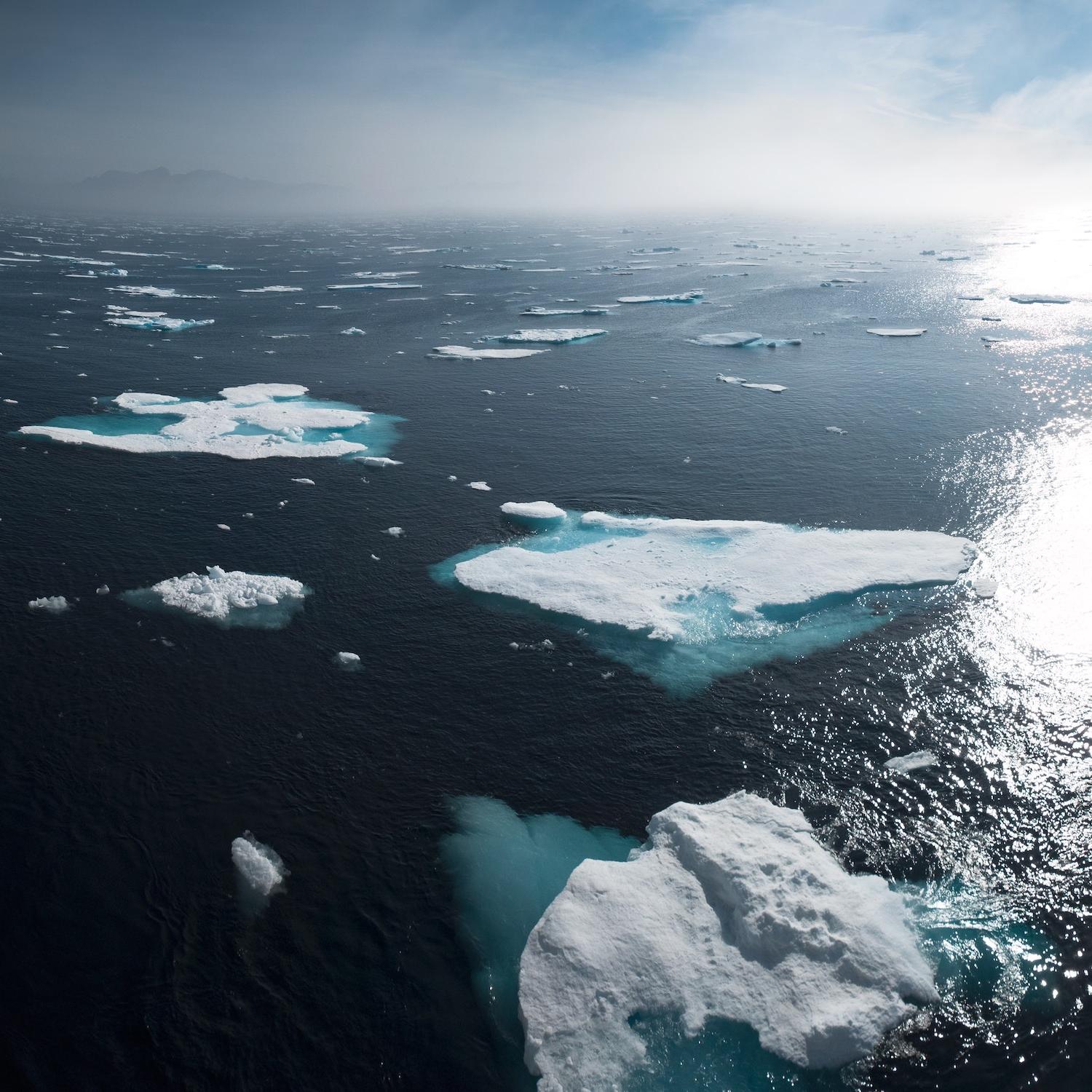
The majority of people in the U.S. now agree that human activity is influencing climate change, according to a recent poll conducted by the Washington Post and the Kaiser Family Foundation. Further, those viewing climate change as a “crisis” has leapt from 23 percent to 38 percent in the past five years.
These findings are in line with several other recent surveys (here and here for just two examples). It is likely no coincidence that minds began to change during a time period peppered with extreme weather events, such as five major hurricanes, successive extremely hot years, wildfires and riparian flooding. Local television meteorologists have also become more inclined to cite climate change as a contributing factor to extreme weather events in recent years.
While the fact that 79 percent of American adults polled said that humans are contributing to climate change is good news, that leaves nearly a fifth of respondents who believe they are not. Another recent poll, by YouGov and the Cambridge Globalism Project, found that 13 percent of Americans believe human activity is not at all responsible for climate change, coming in third of the 23 nations polled behind Saudi Arabia (16 percent) and Indonesia (18 percent).
Some experts attribute findings like these to a concerted campaign of misinformation by fossil fuel companies and backers, but it is cause for alarm for many that the current administration in Washington seems intent on rolling back any and all advances the country has made to take action on climate change.
The Washington Post/Kaiser poll also found that many Americans are not clear about the details of climate science—for example, citing plastic bottles and bags (43 percent) or the sun getting hotter (37 percent) as major contributors to climate change. Several experts, however, told the Washington Post it is not necessary for people to know the details as long as they understand the seriousness and the actions everyone can take.
And there are signs for optimism. The annual U.N. climate talks (COP25) are underway in Madrid, and while U.S. federal officials are thin on the ground, a growing coalition of businesses and local and regional governments are stepping in to fill the void.
Case in point: America's Pledge—a coalition founded shortly after U.S. President Donald Trump announced plans to pull the U.S. out of the Paris Agreement on climate change—represents 68 percent of U.S. economic output and over half of U.S. emissions. The group's membership of businesses, cities and states aim to slash emissions by 37 to 49 percent below 2005 levels by 2030—and they are well on their way, according to a progress report released this week.
Transportation (29 percent) and electricity generation (28 percent) represent the largest contributors to manmade climate change. And companies across these sectors are making changes to reduce their emissions. For example, electric vehicle technology has exploded in recent years, and it does not look like it will slow down anytime soon. Volkswagen recently announced new initiatives as part of its effort to pivot toward zero-emission technologies, and IAG recently became the first airline group in the world to set a net-zero carbon target. Business and labor leaders, along with cities across the country, are following suit with their own aggressive climate action plans.
It is easy to get caught up in the latest poll and see only the dire state of 19 percent of the U.S. population in denial about climate science. But it is worth taking a moment longer to see the majority who not only believe we are contributing to climate change, but are part of the effort that will address it.
Image credit: William Bossen/Unsplash
3 Ways Tech Improved Disability Inclusion in 2019


Super Bowl-worthy video games and eye-controlled TV remotes were just some of the ways companies used technology to increase accessibility in 2019. Here are three stories of brands making significant strides in disability inclusion, thanks to state-of-the-art technological advances.
1. Comcast makes channel surfing, customer service more accessible
Comcast released two new accessibility features for its Xfinity subscribers this year. In June, the cable company debuted X1 Eye Control (pictured above), a Web-based remote that allows customers to access all the features of a traditional Xfinity TV remote through their existing eye gaze or Sip-and-Puff communication systems. (These assistive technology systems are often used by people with neuromuscular disorders or spinal injuries.) The remote was named one of Time’s 100 Best Inventions of 2019, because “for many, it will be the first time they’ve had the power to change the channel.”
On December 3, International Day of Disabled Persons, Comcast introduced ASL Now, a customer support service that communicates with American Sign Language (ASL) through video chats. Customers can call and get answers to questions regarding billing, Internet and more. This is the first such service in the cable industry.
2. Microsoft’s Super Bowl ad highlights adaptive Xbox controller
Microsoft’s Super Bowl spot follows a boy named Owen as he plays video games with his friends thanks to the Xbox adaptive controller. Like Owen, the other young people featured in the commercial also happen to have limb differences or mobility issues that can make gaming difficult. The Xbox adaptive controller is compatible with a range of joysticks, switches, wheelchair mounts and other accessories to help.
“No matter how your body is or how fast you are, you can play. It’s a really good thing to have in this world,” Owen says in the commercial.
The Kellogg School of Management at Northwestern University, which ranks Super Bowl ads each year, gave Microsoft’s ad an A “because of its distinctiveness and emotional depth. The message was about how Microsoft is developing tools to help everyone win, such as a gaming device that helps people with disabilities play with more ease.”
3. Project #ShowUs brings diversity to stock photos
Women have traditionally been depicted in stock photos as young, thin, white and able-bodied. Search results for “career woman” or “empowered woman” often include a variety of stereotypes—none of them flattering.
To address this disparity, Getty Images partnered with Dove and creative agency Girlgaze to launch Project #ShowUs.
According to the project’s website, #ShowUs is a library of more than 5,000 photographs “devoted to shattering beauty stereotypes by showing female-identifying and non-binary individuals as they are, not as others believe they should be.” Thirty-nine countries and 116 photographers—all identifying as female or non-binary—are represented in the collection, which highlights subjects of different ages, races, professions, body types, religions, gender identities and physical abilities.
#ShowUs is not Getty’s first collaboration for increased diversity in its stock photo offerings. In 2018, Getty joined with Oath and the National Disability Leadership Alliance to create the Disability Collection, a series of stock images highlighting people with disabilities carrying out everyday tasks like shopping, raising families or playing sports. Photographers with disabilities were involved throughout the development of the photo collection. After all, while 15 percent of people have a disability, only 2 percent of stock photos include representation of disabilities.
Image credits: Comcast (press use only)
Green Chemistry: The Secret Behind Sustainable Product Development
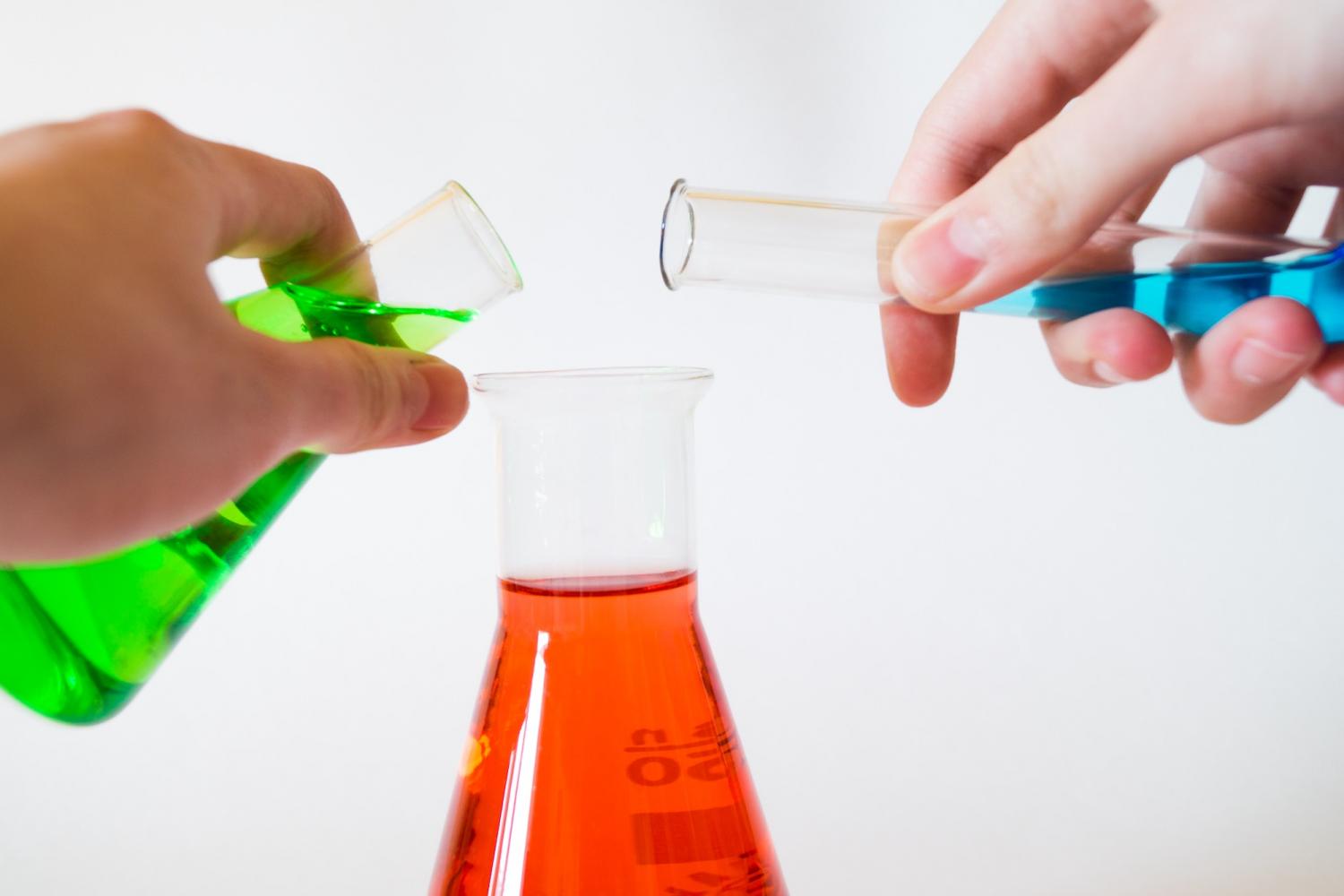

Behind the scenes of many corporate sustainability commitments are improved chemical processes that reduce environmental impact, also called green chemistry. So, what is green chemistry, and why does it matter to business?
Essentially, green chemistry refers to creating alternatives to potentially hazardous substances and redesigning chemical processes in a way that reduces waste and improves resource efficiency.
In the U.S., the American Chemical Society—which codified the 12 Principles of Green Chemistry in the 1990s—advocates for the field on a bottom-line basis: “We can do all of this and still maintain economic growth and opportunities while providing affordable products and services to a growing world population.”
The green chemistry conundrum
That’s all well and good, but it does not account for consumer behavior.
In some respects, global brands are victims of their own success. Once attached to a brand, loyal consumers are reluctant to change, and brands become wary of changing the product formulas that those customers know and love.
Jeffrey Whitford, head of corporate responsibility and branding for the research and biotech company MilliporeSigma, described the challenge last week in an interview with TriplePundit.
“The impetus for change is quite low because why are you going to mess around with something that works, and switch to something that may or may not work,” he explained. “Even scientists struggle to talk about this.”
Some consumers may be reluctant to try less toxic products, such as personal care and household cleansers, due to a perception that they are not as effective as the conventional products they are meant to replace, Whitford noted. Others who use greener products exhibit something he called the “green deficit,” in which they overuse the product in an effort to make sure it performs effectively.
“At the end of the day, science is driving the formulations of the products we use on a daily basis," Whitford said. "The challenge is: Can we help raise awareness so people can understand what green chemistry can do to reduce hazards and toxicity? That’s the tipping point we’re at today.”
Consumer awareness is key
Many consumers are already familiar with green chemistry in the form of bio-based personal care and household products. Consumer awareness in that area can transfer to other sectors, helping to create a broader demand for products based on green chemistry, Whitford explained.
One good example is in agriculture, where consumers are beginning to demand fresh produce and processed foods that eliminate or minimize the use of toxic pesticides and fertilizers. But the challenge of building awareness becomes more difficult when the field of impact extends to new areas of consumer consciousness.
“Among the things you wouldn’t think about, leather processing is a good example. Chromium is used for tanning the leather for that comfy leather sofa,” Whitford explained.
There are significant environmental and public health impacts associated with chromium tanning, including water and soil contamination, as well as worker risks from mishandling chromium metal. And these impacts tend to fall on the most vulnerable communities globally, Whitford said. In addition, health researchers have accumulated evidence of allergic reactions in consumers exposed to chromium-tanned leather.
Still, consumer awareness of these issues remains low. Although ATP Atelier and several other leading brands are marketing vegetable-tanned accessories under the description “metal-free” leather, consumers don’t necessarily realize that refers to the tanning process.
Public knowledge of the chemicals used to produce clothing that is wrinkle-free, stain resistant or waterproof is similarly minimal. And apparel is far from the only mainstream consumer segment where manufacturing processes like these fly under the radar.
Green chemistry and transparency
The 12 Principles of Green Chemistry offer a framework for identifying more sustainable and less toxic chemical processes, but they don't detail how to measure performance.
Released in 2017, MilliporeSigma’s DOZN is a quantitative scoring tool for companies seeking to measure their alignment with those 12 principles. By condensing multiple variables into a single score between zero and 100, researchers, scientists and manufacturers can easily see the impact of alternative products.
Launched in May, the second iteration of the platform, dubbed DOZN 2.0, allows comparisons between entire chemical processes, rather than only assessing a single product, Whitford wrote in a blog post earlier this year.
The thought process is that by making complex metrics more understandable, companies will become more willing to change up their formulas. And, importantly, they'll have more information to share with customers, paving the way for brand differentiation around green chemistry.
“The piece we’re trying to add is more transparency in data,” Whitford told us. “Awareness is huge. Awareness brings questions, questions bring action, and action brings quantification.”
Image credits: Alex Kondratiev and Louis Reed via Unsplash
9 Ways Companies Can Help Stamp Out Modern Slavery
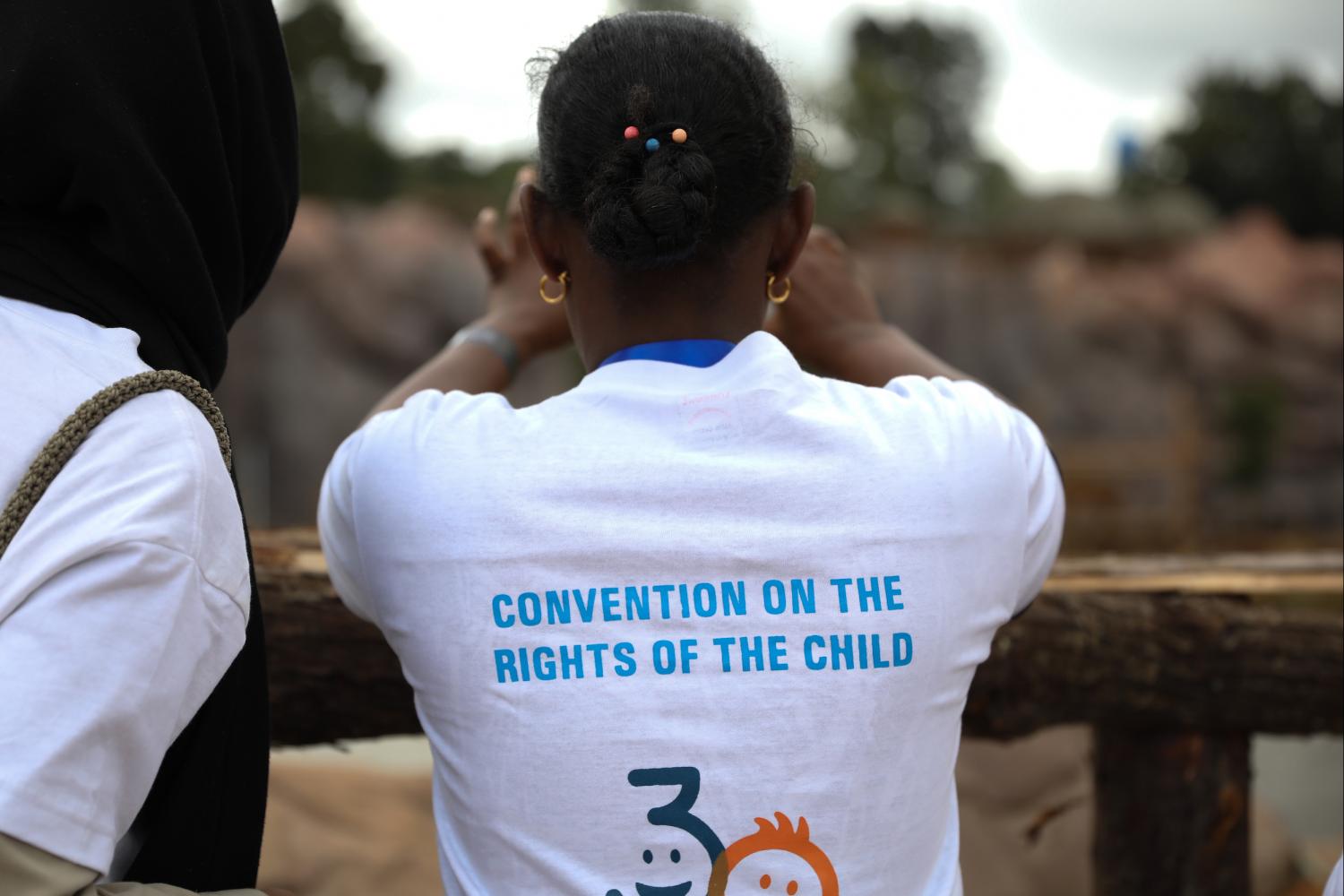
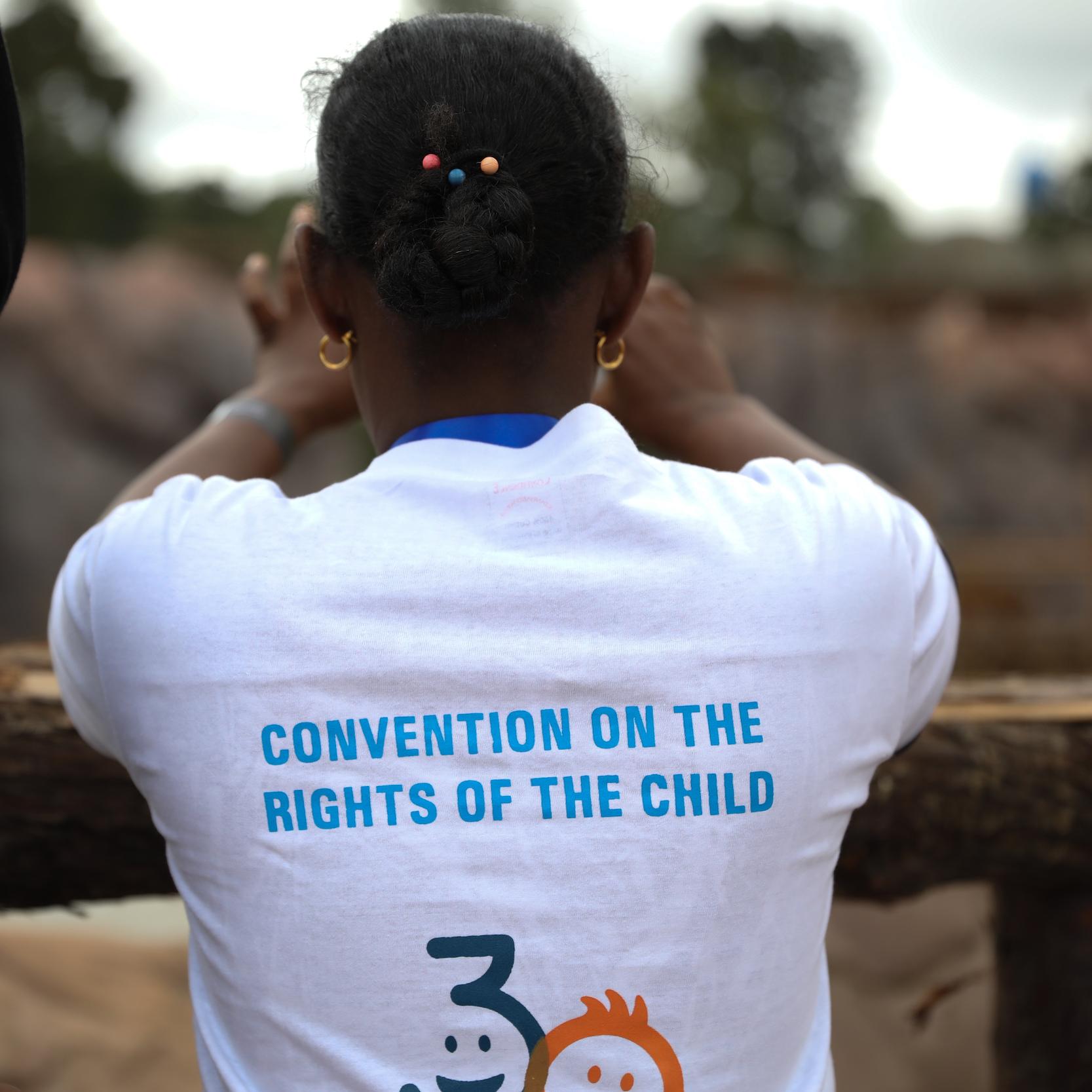
(Image: UNICEF convenes a celebration to mark the 30th anniversary of the Convention on the Rights of the Child in Addis Ababa, Ethiopia, in November 2019. To coincide with the anniversary, the U.N. themed Human Rights Day 2019 around youth engagement.)
The International Day for the Abolition of Slavery is observed on December 2 every year to highlight the importance of eradicating contemporary forms of slavery. It’s followed by the International Day of Human Rights on December 10.
Both of these observance days remind us that the fate of human rights is no longer defined entirely by governments and international institutions. Stakeholders worldwide—businesses, investors, civil societies and governments—are recognizing the very real risk of exploitation within the supply chains that feed and drive our economies.
This year’s International Day of Human Rights focuses on youth participation and empowering young people to know and claim their own rights—and stand up for others.
There is no doubt that youth can be a positive force for change when provided with the knowledge and opportunities they need to thrive. Given a chance—and from what has been seen most recently with the “Greta Effect,” in reference to 16-year-old climate activist Greta Thunberg—young people can contribute to nurturing resilience and building a place for themselves in the collective life of their communities.
The private sector has a clear role to play in the global fight for human rights—and in mobilizing young people as advocates. But before they can inspire future change agents, companies must first get their own houses in order on human rights, identify where abuses could occur in their supply chains, and understand how these issues affect young people worldwide. Practical and actionable steps like these can help to start that conversation.
1. Proactively build business awareness: Most companies are unaware of how youth in forced labor can become part of their supply chains. Companies must understand the legislation and develop strategies to ensure compliance and due diligence.
2. Push beyond voluntarism: It must be mandatory for companies to practice due diligence and report assessment of the risk of child labor or forced labor being used in their supply chains. Management must demonstrate concrete actions the company is to take to address any presence of human rights violations.
3. Protect victims: Enforcement or intervention should first and foremost be enacted with consideration for the protection of those who are vulnerable or are caught in modern slavery.
4. Lever public procurement: Public-sector contracts must require that public bodies and their subcontractors report on their due diligence to address youth labor, modern slavery and human rights.
5. Leverage consumer power: Create a central, public registry of declarations by companies detailing their efforts to stop youth in modern slavery. Create a list of companies required to report under law.
6. Eliminate reporting thresholds: If we are to make children and youth rights core to business, compliance should be demanded of all businesses—large and small.
7. Go beyond reporting: Include proactive due diligence on prevention, identification and remediation of child violations.
8. Require responsibility at the high level: Engage CEOs and boards of directors in the development of policies that relate to child labor and human rights.
9. Use third-party audits as a best practice: Carry out independent third-party audits of all product supply chains at identified points of risk as part of due diligence, per OECD guidance.
The bottom line
At the government level, many countries must catch up in drafting modern slavery legislation. As they do, there are models to build on and improve from, including policies enacted in California, the U.K., France and Australia over the past decade.
But companies do not have to wait for government in order to root out modern slavery within their supply chains, and some are already taking concrete steps forward. Ultimately, addressing modern slavery, child labor and other human rights abuses is not just a public- or private-sector issue, nor is it a problem for only one part of the world to solve. It's a collective challenge that requires collective action. Will we rise to the occasion?
Image credit: Nahom Tesfaye, UNICEF Ethiopia/Flickr
Hopes For Our Children: In 2019 and Beyond
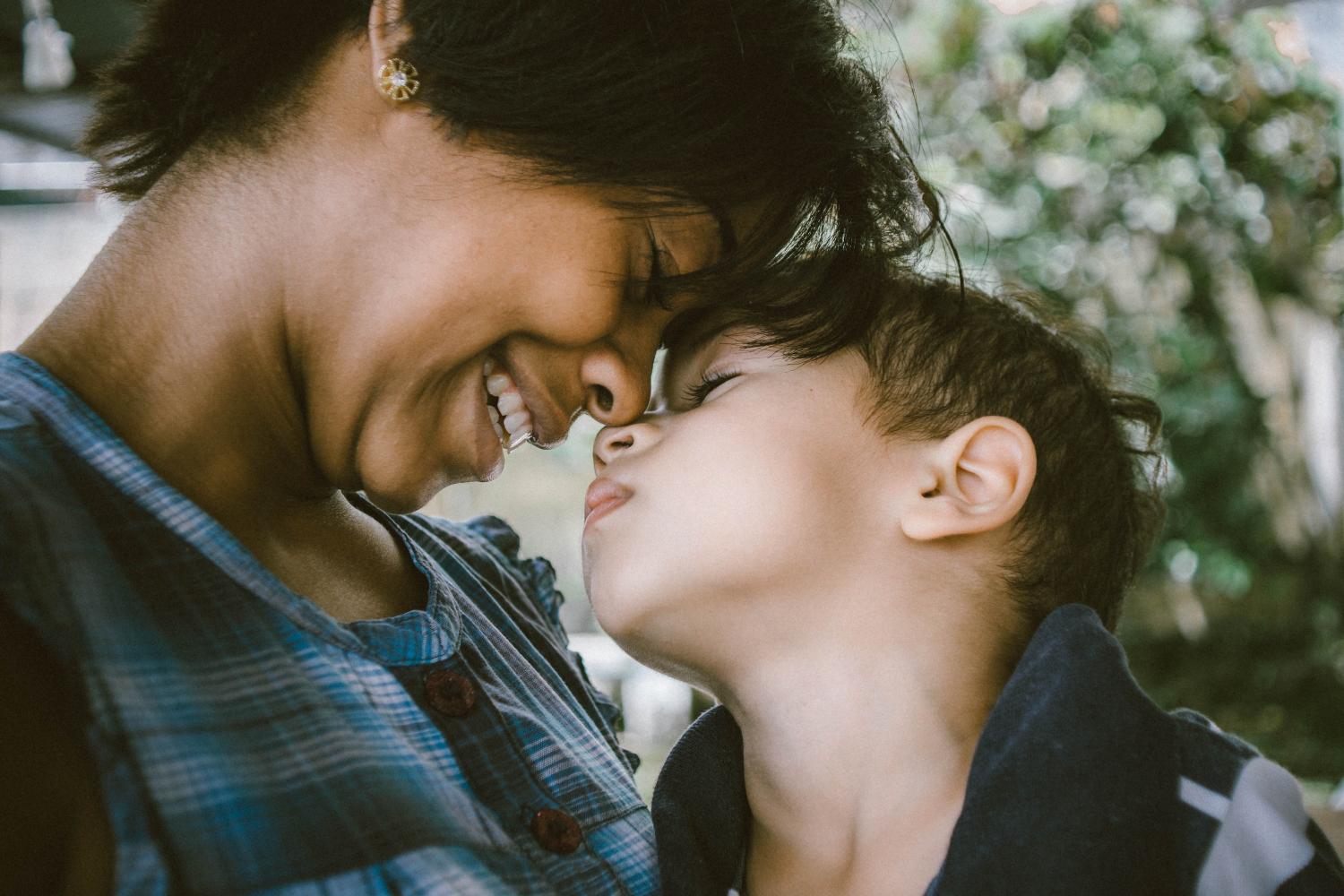
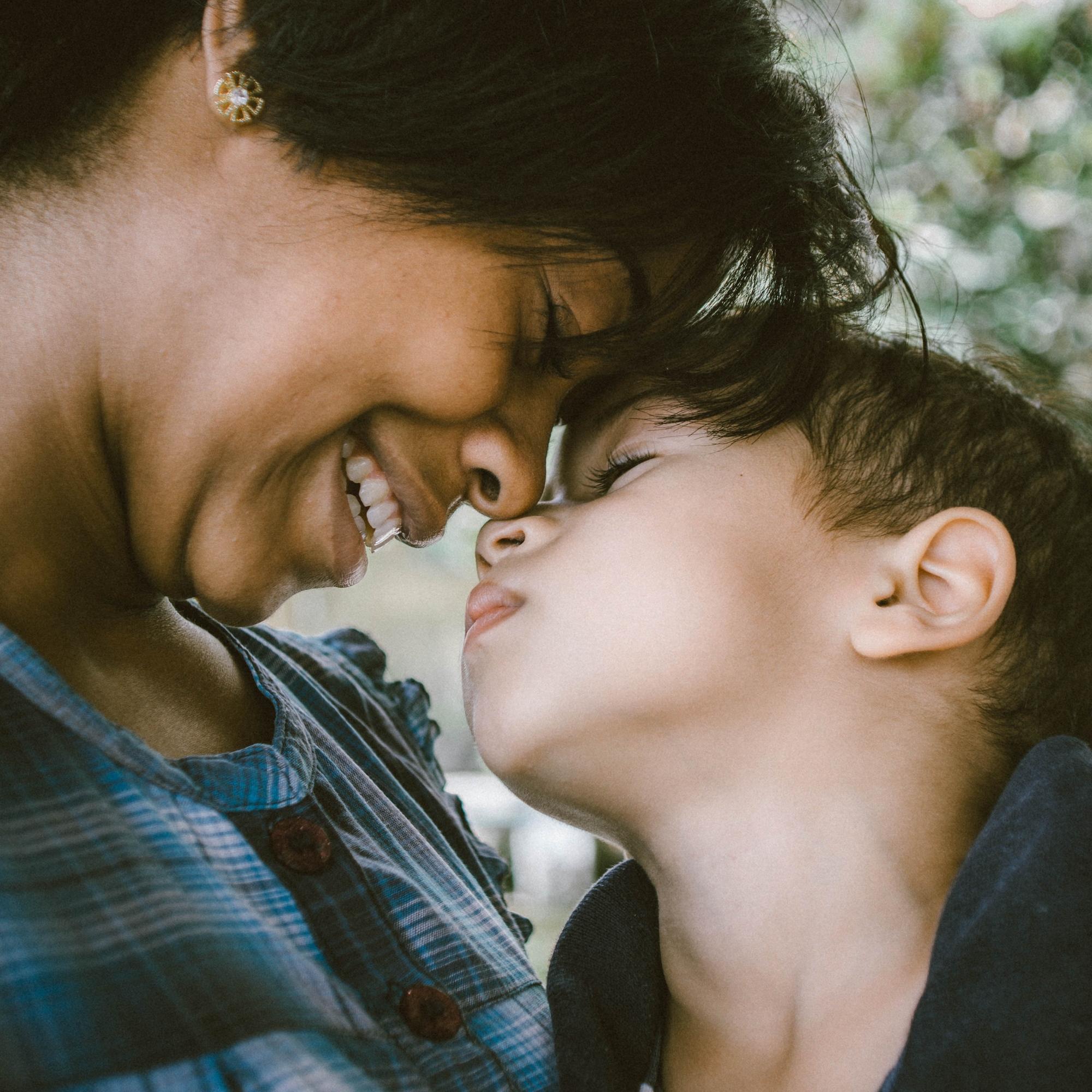
In 2019, I became a grandfather. I've worked in sustainability for years, and I am so proud of my daughter and son-in-law for raising my granddaughter in a solar-powered home and driving her in an electric car.
One of her favorite treats is Plum Organics’ Super Puffs, which her grandfather introduced to TriplePundit readers about 10 years ago. I still hold in my heart Plum Organics’ trademarked vision statement of “pure from the start” as a hope I have for my granddaughter and all babies.
But we end 2019 with this reality: Our hopes for our children are caught between the ability of sustainable products like electric cars, solar power and organic foods to deliver a healthy and prosperous future and the control over government policies held by carbon-centric companies protecting their market share. Here are some of the most crucial factors affecting our children's future—and what we can do about them.
Pollution still impacts our children’s health
In 2019, the majority of U.S. children face health risk from air pollution. The Centers for Disease Control and Prevention (CDC) does an annual report on children's health statistics. This report finds that 62 percent of our children live in counties with a measured air pollutant concentration above the levels of one or more National Ambient Air Quality Standards.
To make things worse: Lobbying expenditures by carbon-centric companies are 10 times greater than the lobbying expenditures of nonprofit environmental groups. The success that carbon-centric companies have had in lobbying our government to roll back pollution regulations is a major reason why pollution still threatens our children’s health.
2019 marked a new low in EPA deregulation
The Donald Trump administration proposed eliminating the private medical data the U.S. Environmental Protection Agency (EPA) uses to design regulations. This medical data is the underlying science used by the EPA in crafting regulations that have reduced elevated blood lead levels in children aged 1 to 5 years from almost 26 percent between 1988 and 1994 to less than 1 percent today.
Another record year for GHG emissions
2019 recorded the highest levels of CO2 atmospheric concentrations in human history. The harsh reality is that my granddaughter’s world will be hotter than mine. Her future will be shaped by weather extremes that will reduce food supplies, job opportunities and human health.
When I began writing about climate change in 2007, the world needed to reduce its annual greenhouse gas emissions by 0.7 percent each year to achieve the Paris Accord goal of limiting global warming to 2 degrees Celsius above pre-industrial levels by the end of this century.
Today, the world would have to begin reducing emissions by 2.7 percent annually to reach this goal, but the reality is that the world is still increasing its global warming emissions.
Economics is a major driver in world emissions. Globally, our governments continue to subsidize petroleum, natural gas and coal. They continue to under-regulate pollution compared to its damaging costs. The result is that carbon-centric technologies look cheaper than clean technologies. This price distortion results in consumers being misled into buying products that generate greenhouse gases and pollution at a cost to be paid by the very babies we love so much.
Reason for hope: 2019 proves we can have a sustainable economy
The good news is that 2019 demonstrated how sustainable technologies can cost less and deliver more solutions.
Case in point: The competitive pricing of the Tesla Model 3 in the luxury car market—plus superior performance and zero emissions—is generating more car sales than Mercedes and BMW, combined.
Solar power is now the least costly source of electricity generation in several markets worldwide. In a milestone deal, Los Angeles’ municipal electric utility signed a 400-megawatt contract to buy electricity from a combined solar and battery electric generating system for 3.3 cents per kilowatt hour—which proved to be cheaper than a natural gas fueled peak generation system.
Beyond Meat, the tech company producing meatless burgers, went public in 2019. And healthy, sustainable food produced with a lower emissions footprint is now on the menus of our fast-food restaurants.
California’s economy, anchored on renewable energy and energy efficiency, grew to become the fifth largest in the world while also reducing its GHG emissions.
Optimistically, my granddaughter may look back at her birth year as the year when U.S. consumers began buying into the idea of a sustainable economy.
But realizing a sustainable economy’s fullest potential will only happen when consumers see a product’s health and environmental costs included in its price. It will only happen when we stop providing tax subsidies for fossil fuels.
If this happens, our children will have an exciting future where what they buy will deliver on both value and human health. The question is: Will we make it happen?
Image credits: Bruno Nascimento and Joshua Rodriguez via Unsplash
Verizon Wants To Harness 5G to Bridge the Digital Divide
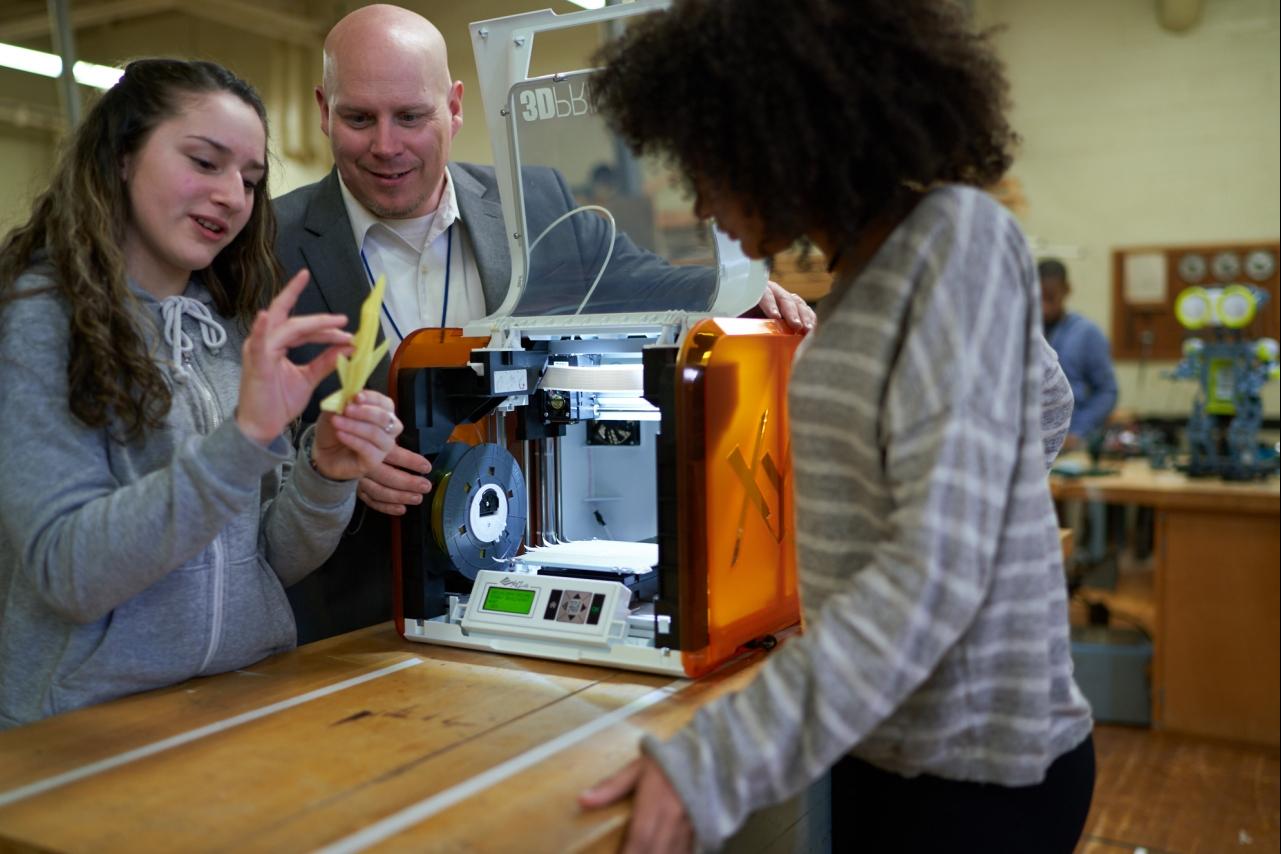

(Image: One of several initiatives aimed at boosting digital inclusion, the Verizon Innovative Learning program exposes middle-schoolers in under-resourced schools to new technology applications in subjects such as science and engineering.)
To say it’s been a busy year for Verizon is an understatement. More accurately, it’s been a busy decade for the telecommunications giant. The company has been shifting its $131 billion business portfolio and 150 global locations aggressively toward both environmental and social sustainability.
For example, Verizon generated headlines this year by launching the first $1 billion green bond within the telecom sector. The bonds mature in 2029, but Verizon plans to use the vast majority of this offering’s proceeds on projects set to launch over the next three years. Funds from the bonds will kick off projects in renewable power, water and energy efficiency, and sustainable buildings projects.
And when it comes to social impact, Verizon has made clear that it will help lead us during the fourth industrial revolution, due to what will be possible thanks to 5G technology. As rapidly advancing technology changes the way we live, learn and work, the company says it’s ramping up investments in digital inclusion and education to ensure no one is left behind.
To learn more about how Verizon will be at the vanguard of social innovation and digital inclusion, TriplePundit connected with Rose Stuckey Kirk, the company’s chief corporate social responsibility officer.
TriplePundit: Why is the digital divide a concern for Verizon?
Rose Stuckey Kirk: To improve people’s lives, we must use technology responsibly—and this is at the core of our business strategy and social responsibility commitment.
For many years, we’ve applied technology to help solve the digital divide in education. Think about this: Right now, there are more than 6.5 million students without tech resources or tools in schools. This places them at a disadvantage to compete for jobs of the future, where more than just technical professionals will require the knowledge and use of technology. These students are missing out on a key element of preparation for their futures.
Through our education initiatives, we’re using our technology to help under-resourced students be creators, complex problem-solvers, and creative thinkers and to be more prepared to build better lives for themselves, their families and their communities.
Through workforce development, digital literacy and STEM education opportunities, our goal is to uplift whole communities. We’re building digital learning centers and implementing digital literacy programs focused on workforce readiness skills. At Verizon, it’s about digital inclusion, and together we’re helping to remove barriers of economic prosperity by making technology more accessible and bringing connectivity and digital skills to the people who need it most.
3p: What makes Verizon’s approach to the digital divide unique in the industry?
RSK: We’re on the precipice of a technology revolution so profound that it will change how every industry across the globe operates. 5G is radically expanding access to technologies like virtual reality, augmented reality, the Internet of Things, autonomous vehicles, artificial intelligence, advanced robotics, 3-D printing and wearable tech. We have an obligation and an opportunity to provide the access and inclusivity required to prosper in an era defined by these increasingly complex technologies and to leverage the power of our network to create a digitally inclusive environment for all.
For example, our Verizon Innovative Learning program leans into middle schools in under-resourced areas across the U.S., giving students the exposure and confidence they need to see themselves as scientists, engineers, technologists and innovators—careers they may not have even known existed. Our commitment means we provide these students with the latest tech tools-- from 24/7 internet access to tablets or Chromebooks for every teacher and student. But more than that, we provide a robust support system for teachers through technology enabled curriculum and ongoing training to help create the kind of transformation that changes lives.
Additionally, we’re working on expanding tech access in rural areas through our own infrastructure and our LTE in Rural America (LRA) program, in partnership with rural carriers, to accelerate the deployment of rural wireless broadband services. We’ve also committed to a rural education program, which introduces STEM and higher education opportunities to middle school girls in rural locations through a partnership with community colleges.
3p: Can you update us on your commitment and timeline for being the first to bring 5G technology to the classroom?
RSK: 5G already has a huge impact on what is possible in the classroom, delivering unprecedented augmented and virtual reality experiences that enable students to visit ends of the solar system, construct and dissect cells, meet underrepresented minority icons from history and more.
As part of our commitment to leading the Fourth Industrial Revolution, Verizon is committed to bringing state-of-the-art technology, including 5G access, to select schools across the country, which we call Verizon Innovative Learning schools. The journey started in 2018 when Verizon launched the 5G EdTech Challenge, inviting nonprofits, universities and startups to submit ideas to transform middle-school classrooms using 5G. The winning teams, whose solutions include dynamic education solutions that tap into augmented and virtual reality technologies that truly harness the power of 5G, launched their projects in the Verizon 5G Innovative Learning lab at E-Prep Cliffs in Cleveland, Ohio, this fall.
Not only are we doubling the number of schools in the program, we are committed to bringing 5G to 100 Verizon Innovative Learning schools across the U.S. by 2021.
We’re bringing much needed exposure to these young students in Title 1 schools, but moreover we’re empowering them with the ability to use the 5G technology that is going to be a staple of their future success. We’re introducing this technology to give students a voice and to be the change makers for their community.
3p: The issue of digital exclusion is so challenging and complex that clearly no one organization can solve it on its own. How is Verizon working with other companies and organizations to advance its goals?
RSK: We can’t build a digitally inclusive society on our own, so we’re working with partners across sectors, including policymakers on Capitol Hill, Hispanic-serving institutions, Historically Black Colleges, and nonprofit tech and STEM partners. We’re dedicated to ensuring more people, especially students and diverse communities, have access to technology and know how to use it to succeed.
For example, Verizon recently announced a partnership to offer free access to the New York Times to over 7 million students and teachers in Title 1 schools across America. We’ve also partnered with UnidosUS to build digital learning centers and to implement a digital literacy program focused on workforce readiness skills in underserved Latino communities in four major U.S. cities.
3p: In addition to the great work supported by the Verizon Foundation to address the digital divide, how is Verizon’s Corporate Responsibility team helping to integrate this priority throughout the business?
RSK: We are taking actions in three key areas: digital inclusion, climate protection and human prosperity. These are the most important issues to the communities we serve and those that Verizon’s technology and assets can most positively impact. All of these areas have positive impact on society as well as value to our business, as they can open new markets, catalyze innovation and drive new business models.
Verizon’s climate protection efforts are contributing to a greener planet by reducing carbon emissions and minimizing waste in our operations, while also using our technology for environmental solutions. We’ve committed to be carbon neutral in our operations by 2035, focusing immediately on our 5G network and supply chain and working toward making them carbon neutral by 2025. In support of that commitment, we’ve set a goal to source renewables so the provide 50 percent of our total electricity, a significant undertaking for a company of our size. We are driving innovation in our network and solutions to help solve global climate change.
Image credit: Verizon via 3BL Media
66,000 Employees Have Spoken: They Want To Work For Companies That Give Back


By Elizabeth Dove and Alison Grenier
Companies trying to unlock employee motivation should direct their attention to their community investment strategy. These were the conclusions reached by Volunteer Canada and Great Place to Work Canada in recently released research based on 66,000 Trust Index survey responses from 300 Canadian organizations. This is one of the largest sample sizes of employee perspectives on community investment ever studied.
The Business Case for Giving Back highlights the connection between corporate involvement in the community and key business metrics, including employees’ long-term commitment to the organization, positive brand promotion by employees, employees going above and beyond, and employees feeling that they make a difference at work.
The findings provide undeniable proof of the increased benefits to businesses and showcase tangible ways to create a corporate community investment program that improves employee engagement.
When people “feel good about the way my organization contributes to community," they are:
- 18 percent more likely to stay: “I want to work here for a long time.”
- 45 percent more likely to be brand ambassadors: “I’m proud to tell people I work here.”
- 83 percent more likely to put in more effort: “People are willing to give extra to get the job done.”
- 57 percent more likely to feel valued: “I feel I make a difference here.”
The research also looked at companies in the top versus bottom quartile on community investment, defined based on average employee responses to the survey statement, “I feel good about the way my organization contributes to community." Top quartile companies enjoy the following associated business benefits:
- 13 percent voluntary turnover in top quartile companies (versus 23 percent in bottom quartile).
- 80 qualified applicants per position in top quartile companies (versus 61 in bottom quartile)
- 19 percent revenue growth in top quartile companies (versus 16 percent in bottom quartile)
- 72 percent introduced new methods in the past year (versus 54percent in the bottom quartile)
Employees give higher ratings to companies that involve them meaningfully in community
Companies that involve their employees in giving back got the highest ranking by employees and the highest business outcomes illustrated above. Although there is no one right way to build it, a strong community investment program begins with a corporate commitment to sharing time, talent and money with the community.
Here’s what the highest rated businesses did differently than other organizations:
Sharing time
Best workplaces for giving back: 90 percent give their employees paid time off to volunteer, ranging from four to 100 hours per year, with 16 hours a year being the most common amount of paid time off.
Other organizations: Half offer paid time off to volunteer, 32 percent offer a set limit and 18 percent offer it on an ad-hoc basis.
How leading companies share time:
- Japanese pharmaceutical company Astellas gives its employees five paid days off to volunteer each year and posts volunteer opportunities on its Intranet.
- When Cisco employees volunteer on their own time, the information technology company supports them by donating $10 to the employee’s approved, chosen charity for every volunteer hour.
Sharing talent
Best workplaces for giving back: 83 percent align their community investment efforts with their unique products or skills to maximize employee motivation and community impact.
Other organizations: Only 18 percent align their community investment efforts with their unique products or skills.
How leading companies share talent
- At accounting services company Grant Thornton, teams across the country organize volunteer tax clinics every January and February for community members who need assistance but can’t afford to pay for professional support.
- Homebuilder Trico Homes partnered with the Chiniki Nation to help restore 159 homes that were badly damaged in a 2013 flood in Calgary, Alberta, Canada. This evolved into a long-term Renewable Energy Project that will create employment, skills development and revenue for the Chiniki Nation.
Sharing money
Best workplaces for giving back: 100 percent match employee donations or donate money or in-kind services to community organizations.
Other organizations: 60 percent match employee donations or donate money or in-kind services to community organizations.
How leading companies share money:
- ATB Financial matches donations to causes in Alberta through ATB Cares. People can donate to any registered charity in Alberta at ATBcares.com, with ATB matching 15 percent of every dollar donated. In 2018, ATB, its customers and its employees donated $4.8 million to local charities.
- Medical technologies firm Stryker donates millions of dollars’ worth of medical devices and equipment to overseas humanitarian missions and lends or donates equipment to surgeons on aid visits to developing countries.
Boost employee engagement: Conversation-starters to ensure your giving back programs speak to employees
As you consider your organization’s community commitments and programs alongside these findings, you may be trying to determine your next step in advancing your activities in ways that create better employee engagement. The most productive conversations include multiple departments, such as human resources, corporate responsibility and communications, along with senior leadership and external stakeholders and, of course, employees.
Start with the following questions:
- What do we consider success for our community investment program?
- What would employees consider success?
- How do employees want to be involved?
- What indicators will tell us if our programs are resonating with employees?
- What is our program missing? What outcomes would justify increasing the budget?
- How can we show employees that we value the time they take away from their work to support the community?
For more information, read the full report, The Business Case for Giving Back. The report was produced in partnership with the Corporate Community Engagement Council (formerly the Corporate Council on Volunteering) and with the support of CIBC, Deloitte, RBC, Symcor and TD Bank.
About Elizabeth Dove: As director of corporate citizenship, Elizabeth Dove is Volunteer Canada’s organizational lead on supporting companies in their employee/stakeholder community engagement programs. She convenes the Corporate Council on Volunteering, leads the consulting practice, and collaborates with companies and nonprofits to create thought-leadership on CSR practices that provide benefit to communities, businesses, their employees and other stakeholders.
About Alison Grenier: Alison Grenier is Head of Culture & Research for Great Place to Work Canada. With a decade of experience studying the Best Workplaces, Alison leverages GPTW’s unparalleled data library to uncover emerging workplace trends and insights.
Image credit: ray sangga kusuma/Unsplash
Pop-Up 'Museum of Plastic' Comes to Miami Art Week


Those soaking up arts and culture during Miami Art Week and Art Basel will get an up-close look at the state of plastic pollution in our oceans.
At the pop-up Museum of Plastic in Miami Beach, guests are invited to explore an interactive experience featuring physical and digital representations of how plastics affect marine ecosystems. Presented by the nonprofit Lonely Whale, in collaboration with HP and online media company ATTN:, the museum is open to the public from Dec. 6 through Dec. 8.
The timing is fortuitous, as world leaders meet for the annual U.N. climate talks in Madrid (COP25) with a greater focus on the oceans than ever before.
Ocean health and climate change
Ocean health is of great concern to Chile, the president of this year's COP. The South American nation is one of more than 20 countries to include ocean solutions in commitments to the Paris climate agreement—and it hopes to leverage the talks to inspire other nations to do the same, declaring COP25 the first "Blue COP."
Along with the ocean issues you'd imagine would relate to climate change, such as acidification and ocean warming, plastic pollution is emerging as a key concern for the U.N.
In a special report released in September, the Intergovernmental Panel on Climate Change (IPCC) cited marine pollution as one of nine major concerns facing the world's oceans and named plastic waste as a top contributor.
“Marine pollution, such as sewage, sunscreens, fertilizers and plastics, can act synergistically with climate change factors, increasing the detrimental impacts of both," Dr. Craig Downs, executive director of Haereticus Environmental Laboratory, a nonprofit scientific organization focused on natural ecosystems, said in a statement. "Together, climate change and marine pollution are a guarantee for the destruction of marine vitality.”

Inside the Museum of Plastic
All of this sounds pretty dismal, and as we've seen for years, doom-and-gloom is often not the most effective way to start a solutions-oriented dialogue.
With the Museum of Plastic, Lonely Whale hopes to make raising awareness of ocean issues fun, dynamic and engaging (not to mention Instagrammable), though the content is still decidedly serious.
Visitors are greeted with the Ocean Voyage room, where a thriving virtual ocean slowly fills with plastic waste, illustrating the fact that the oceans will contain more plastic than fish by weight by 2050. They can also take selfies with an enormous receipt quantifying how much money global citizens spend on plastic water bottles and how the cash could be used to help the environment.
Videos showcase HP's recycling program in Haiti—which creates jobs while turning ocean-bound plastic into new products—and other solutions to the ocean plastic crisis.

This isn't Lonely Whale's first pop-up museum. The nonprofit first introduced the concept in New York City during World Oceans Week in June as part of its star-studded Question How You Hydrate campaign. Featuring celebrities like Zooey Deschanel and Jason Momoa, the campaign challenges consumers to champion sustainable alternatives to single-use plastic water bottles.
That's no small task: Around 1 million single-use plastic bottles are sold every minute around the world, and revenue from bottled water sales is expected to reach $200 billion before 2023—compared to less than $10.5 billion for the reusable bottle market. Considering how pricy some reusable bottles can be—and how cheap bottled water (which, in the U.S., is often just unfiltered tap water encased in plastic) is by comparison—the discrepancy is pretty shocking.
Still, judging by the reaction to Lonely Whale's campaign, it seems people are becoming more inclined to consider different choices: Over the past six months, more than 60 million people pledged to ditch bottled water through the campaign’s social media challenge, #HydrateLike.
“We're all starting to be willing to have a conversation around our behavior and our everyday choices,” Dune Ives, executive director of Lonely Whale, told TriplePundit in June. “Are we okay with a million species going extinct under our watch? Are we okay with 8 million to 12 million metric tons of new plastic entering the ocean every single year? Are we okay with emissions continuing to rise? Those are our choices.”

We got an early look at the Museum of Plastic at the VIP opening in Miami Beach last night, where collaborator HP came with some news of its own.
The technology company linked up with fashion designer Heron Preston to design a sustainable alternative to a stubborn piece of packaging: plastic poly bags.
The replacement pouches unveiled at the Museum of Plastic are certified for home compostability and could replace poly bags in retail packaging, according to HP—which has been involved in the fight against plastic waste for decades.
Since 1987, it has collected and recycled more than 100,000 tons of plastic for use in new ink cartridges. More recently, it expanded into recycled-content electronics, unveiling a display monitor and laptop made with ocean-bound plastic from its Haiti supply chain and, in October, releasing a carbon-neutral printer made with 30 percent recycled plastic.
“In a world full of bad news, plastic is solvable,” Ives said in a statement. “We know how to solve it, now it is down to the will of leaders and politicians. Our aim is that these conversations about solving the plastic pollution crisis will begin a cultural transformation.”
Image credits: Lynne Filderman